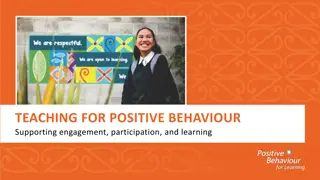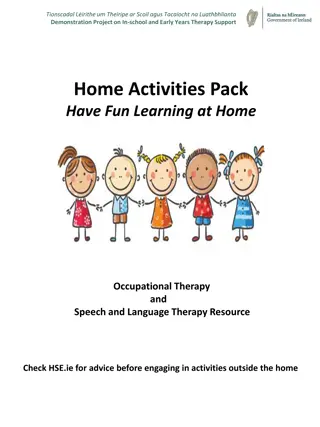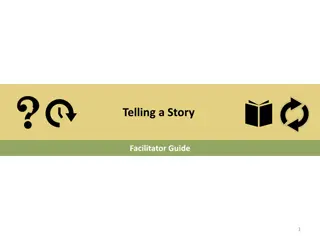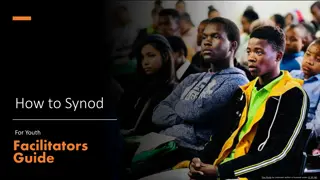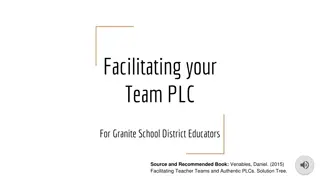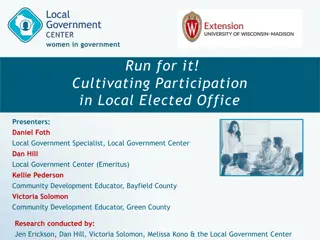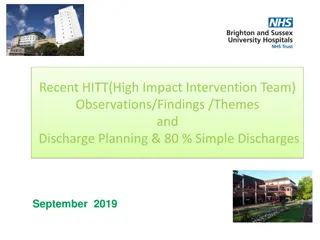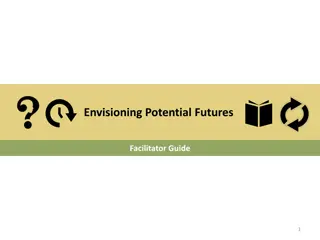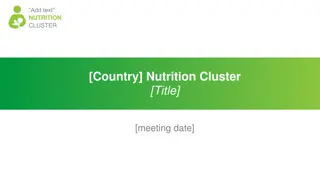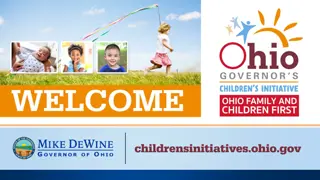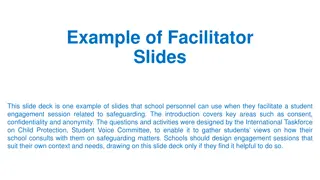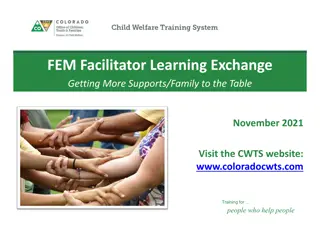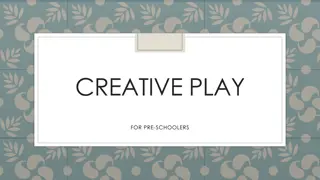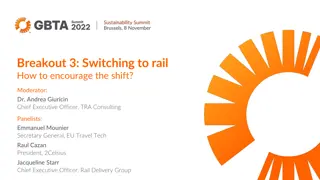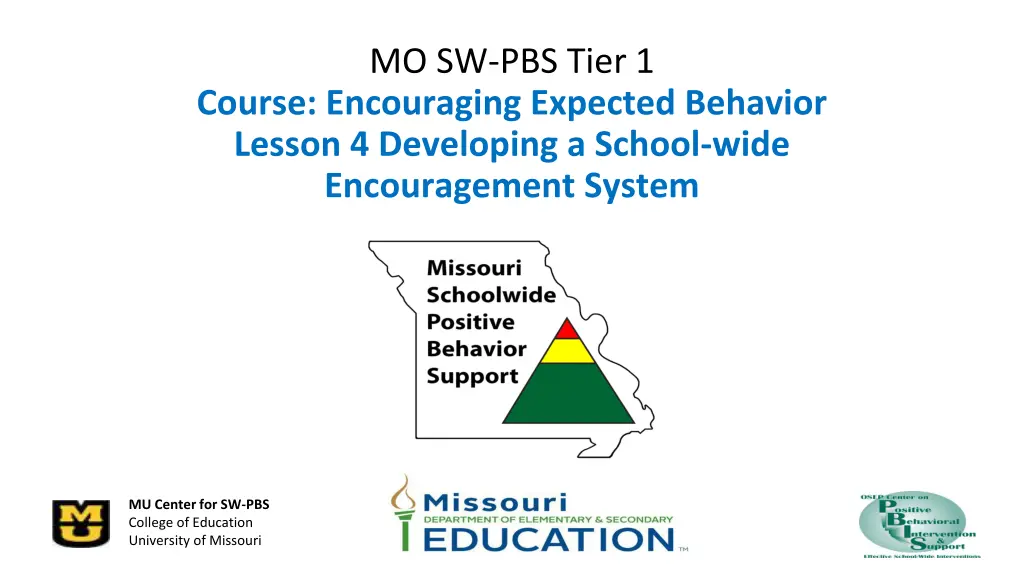
Developing a Comprehensive Schoolwide Encouragement System
Explore the process of creating a comprehensive schoolwide system to promote expected behaviors, including strategies for engaging staff and families. This lesson emphasizes the importance of integrating various strategies to foster positive behavior throughout the school environment.
Download Presentation

Please find below an Image/Link to download the presentation.
The content on the website is provided AS IS for your information and personal use only. It may not be sold, licensed, or shared on other websites without obtaining consent from the author. If you encounter any issues during the download, it is possible that the publisher has removed the file from their server.
You are allowed to download the files provided on this website for personal or commercial use, subject to the condition that they are used lawfully. All files are the property of their respective owners.
The content on the website is provided AS IS for your information and personal use only. It may not be sold, licensed, or shared on other websites without obtaining consent from the author.
E N D
Presentation Transcript
MO SW-PBS Tier 1 Course: Encouraging Expected Behavior Lesson 4 Developing a School-wide Encouragement System MU Center for SW-PBS College of Education University of Missouri
Developer Notes: Delete this Slide Use this slide deck to develop each lesson in the course. Yellow slides to be deleted by developer & / or Facilitator as appropriate. Salmon colored slides are slides that will be personalized by the presenter Incorporate at least one activity for every 10 minutes of instruction LESS is more in terms of words on a slide Use IMAGES and then have notes to describe the concept Format a screenshot of a handout to look like a page on a desk and say pull out handout X vs expecting people to be able to read HO content. If walking through how to use the handout step by step use screen captures to do this MO SW-PBS
Facilitator Notes: Delete This Slide MO SW-PBS
Working Agreements Be Respectful Be an active listener open to new ideas Use notes for side bar conversations Be Responsible Be on time for sessions Silence cell phones reply appropriately Be a Problem Solver Follow the decision making process Work toward consensus and support decisions of the group MO SW-PBS
Attention Signal MO SW-PBS
Introductions MO SW-PBS
Lesson Description This lesson focuses on the importance of pulling all these strategies together to create and document a comprehensive schoolwide system to encourage expected behavior. MO SW-PBS
Handouts T1C5L4 HO 1 Schoolwide System to Encourage Expected Behavior T1C5L4 HO 2 Strategies to Encourage Staff and Families HOAP Action Plan HOAPC Tier 1 Action Plan Checklist HOAC Tier 1 Artifact Checklist MO SW-PBS
Lesson Outcomes At the end of this session, you will be able to Develop a schoolwide system to encourage students use of expected behaviors (your matrix). Develop strategies to encourage staff and families. MO SW-PBS
Rationale The purpose of tangibles in the positive consequence continuum is to prompt adults to provide feedback at rates or ratios that are likely to support consistent student demonstration of expected academic or social behaviors. MO SW-PBS
Overview of Developing a School-wide Encouragement System Creative Ways To Use Tickets Set class or school goals. Write name on ticket and drop in a raffle box. Start a competition between grade levels. Award the Golden Tray for class receiving most tickets during lunch. Chart and graph the number of tickets earned (math). Establish roaming trophy for the most tickets each month; current class prepares celebration for the next class who receives trophy. Display tickets in hallway, outside classroom door. Post tickets on a bulletin board. Trade tickets for paper strip to make paper chain around the school. Set a destination to travel to and learn about; each ticket equals a mile toward the destination on a map. MO SW-PBS
When building a Schoolwide System it is Important to Remember: Not all students are encouraged by the same thing or in the same ways. As students are learning new skills, they need immediate and frequent reinforcement. As students demonstrate mastery, they respond to intermittent and occasional reinforcement to maintain their social behavioral efforts. Many students try to get social attention, while others try to avoid it. Students who avoid social attention may be reinforced by solitary activities, privileges, or tangibles. Many young students are motivated by adult attention, while older students typically are more motivated by peer attention, activities, privileges, or freedom. MO SW-PBS
Missouri Teacher Standards Addressed 2.1: Cognitive, social, emotional and physical development 2.6: Language, culture, family and knowledge of community 3.1: Implementation of curriculum standards 5.1: Classroom management, motivation and engagement 5.2: Managing time, space, transitions and activities 5.3: Classroom, school and community culture 6.1: Verbal and nonverbal communication 6.2: Sensitivity to culture, gender, intellectual and physical differences 8.1: Self-assessment and improvement 8.2: Professional learning MO SW-PBS
Reflective Questions 1. Does your school have a system to encourage students use of expected behaviors? 2. If so, how does your building leadership team use fidelity data sources such as the Tiered Fidelity Inventory (TFI) or the Self-Assessment Survey (SAS) from www.pbisapps.org to ensure students , families , and caregivers voices are included within the encouragement system? 3. If not, how can you begin to use what you learn during this module to begin action planning for your school wide system to encourage expected behavior while ensuring stakeholders are represented throughout the planning process? MO SW-PBS
Pre-Requisites Encouraging Expected Behavior Lessons 1, 2, & 3 Course 5 of the Tier 1 Implementation Guide, Encouraging Expected Behavior Effective Teaching and Learning Practice # 3, Encourage Use of Expected Behavior in MO SW-PBS Handbook. MO SW-PBS
Key Terms FREQUENT-positive teacher and staff interactions should occur at a frequent rate, with a ratio of 4:14, or four instances of positive interaction for each corrective or negative interaction. This is especially important when students are in the initial acquisition phase of learning new skills. INTERMITTENT-to encourage expected behavior may occur less frequently, in an intermittent way, reinforcing skill learning in the fluency stage of learning. Just as quarterly honor roll students are announced, monthly or quarterly recognition for social behavior gives students goals to work toward. OCCASIONAL- long-term, occasional activities; at the end of the semester or school year assists in the maintenance and generalization stages of learning. MO SW-PBS
Unpacking Developing a Schoolwide Encouragement Systems Research in education and psychology indicates positive teacher and staff interactions should occur at a frequent rate, with a ratio of 4:14, or four instances of positive interaction for each corrective or negative interaction. This is especially important when students are in the initial acquisition phase of learning new skills. MO SW-PBS
Unpacking Developing a Schoolwide Encouragement System The phases of learning directly affect the frequency of feedback students need to successfully continue through the phases.
Developing a Schoolwide Encouragement System How can we begin to brainstorm ideas for a schoolwide system to encourage expected behavior using a mixture of frequent, intermittent, and occasional reinforcements? MO SW-PBS
Things to consider when Developing your Tangible System Make tangibles easy to distribute to students Who will reproduce the tickets and supply teachers? Who will be in charge of raffle items or other items of exchange? If tickets are to be counted for awards or data collection, who will handle the counting? MO SW-PBS
Schoolwide System To Encourage Expected Behavior A written schoolwide system to encourage expected behavior should include enough information to thoroughly describe how each component is intended to be implemented. This includes: Name What each recognition activity is called. Often schools tie in their tangible reinforcements with school mascots, mottos, etc. Resources What each recognition item is, and what tasks are needed to be done to create the recognition system and required materials. Description and Criteria What students need to do to earn the tangible recognition and what staff are expected to do to recognize the student(s). When, Where, and How Presented Description of how the tangible is presented to students, how feedback is paired with the tangible, and what students are to do with the tangible. Information to Staff Description of how information will be provided to staff to implement the recognition system and any tasks the staff needs to do to share information with students, families and entire staff Goals Description of the intended target for each component of the schoolwide recognition system. Celebrations Description of what students will get. This should include a wide range of reinforcers that provide attention, items and activities likely to appeal to all students in the school Coordinator Who organizes and oversees implementation of each recognition component. MO SW-PBS
Schoolwide System To Encourage Expected Behavior You can structure your encouragement system in such a way that it is reinforcing to both the student and the teacher. MO SW-PBS
Including Stakeholders in your Schoolwide System for Encouraging Expected Behavior MO SW-PBS
Cautions when Developing your Schoolwide System to Encourage Expected Behavior Be cautious if your system to encourage ALL students: Is too cumbersome (staff will not use it) Based on all or nothing criteria Requires students to prolong their efforts for extended periods of time. Fails to motivate the at-risk students or consistently recognizes those students who need it the least. Becomes boring and predictable.
Examples of how to Keep your Schoolwide System Fresh Plan special events during homecoming week. Find a reason to acknowledge every student in the building on September 12, National Encouragement Day. In observance of National Compliment Day (January 24), encourage students to give a Peer Ticket to a classmate with a compliment. As a celebration, plan a school picnic on April 23, National Picnic Day. MO SW-PBS
Discussion With your SW-PBS leadership team begin brainstorming a schoolwide system to encourage expected behavior for your school using HO3 Schoolwide System for Encouragement of Expected Behavior provided. Be sure to include ways to encourage ALL students: 1. Students who regularly demonstrate expected behaviors and 1. Students who struggle to behave MO SW-PBS
Progress Monitoring MO SW-PBS
Progress Monitoring MO SW-PBS
Progress Monitoring MO SW-PBS
Closing/Next Steps How will you engage staff in developing a schoolwide system to encourage expected behavior? Next steps include Decide upon simple action steps for how your building leadership team will engage staff in developing a system to encourage expected behavior. Update your action plan using the Tier 1 Action Plan template and the Tier 1 Action Planning Checklist. Use the Tier 1 Artifacts Rubric to assess the quality of the resources your team develops. Use the results of the PBIS Self-Assessment Survey (SAS) to gain perspective from all staff, and results from the PBIS Tiered Fidelity Inventory (TFI) to gain perspective from your building leadership team. MO SW-PBS
References 1. Florida Positive Behavior Support Project Website (2006). Retrieved from: http://www.flpbs.fmhl.usf.edu 2. Lane, K. L., Kalberg, J. R., & Menzies, H. M. (2009). Developing schoolwide programs to prevent and manage problem behaviors: A step-by-step approach. New York: Guilford. 3. Colvin, G. (2007). 7 steps for developing a proactive school discipline plan: A guide for principals and leadership teams. Thousand Oaks, CA: Corwin. MO SW-PBS
Contact Information Check Out MO SW-PBS on Social Media: Facilitator Contact Information: pbismissouri.org List HERE facebook.com/moswpbs instagram.com/moswpbs/ MO SW-PBS

